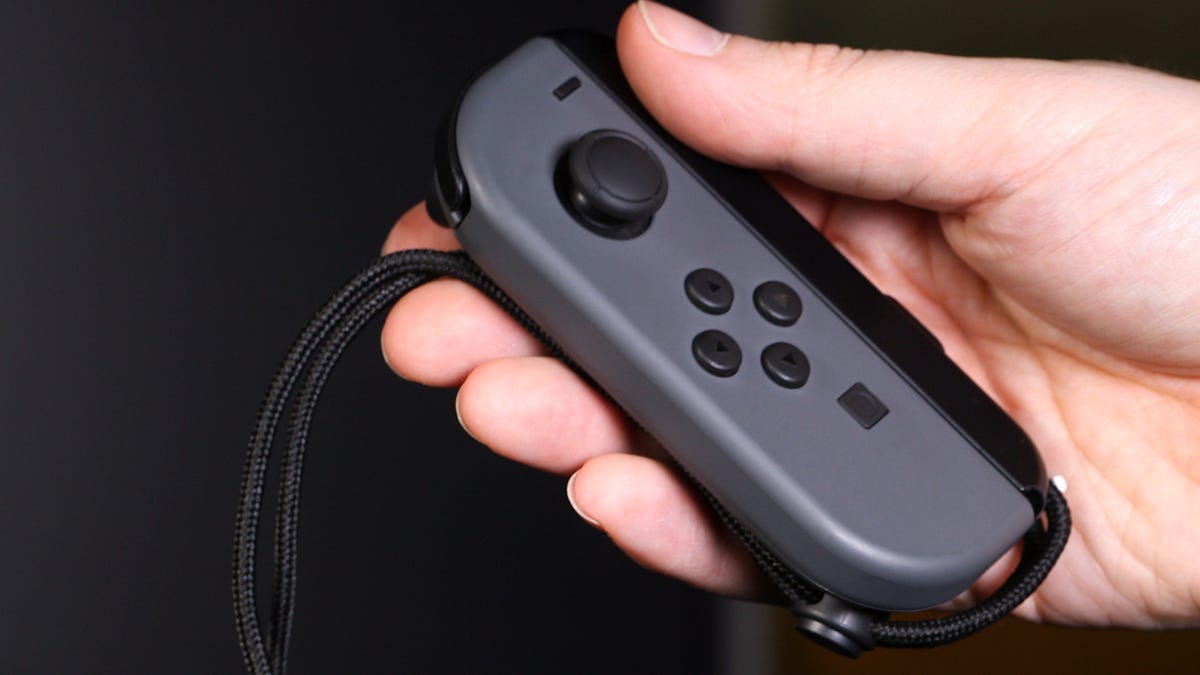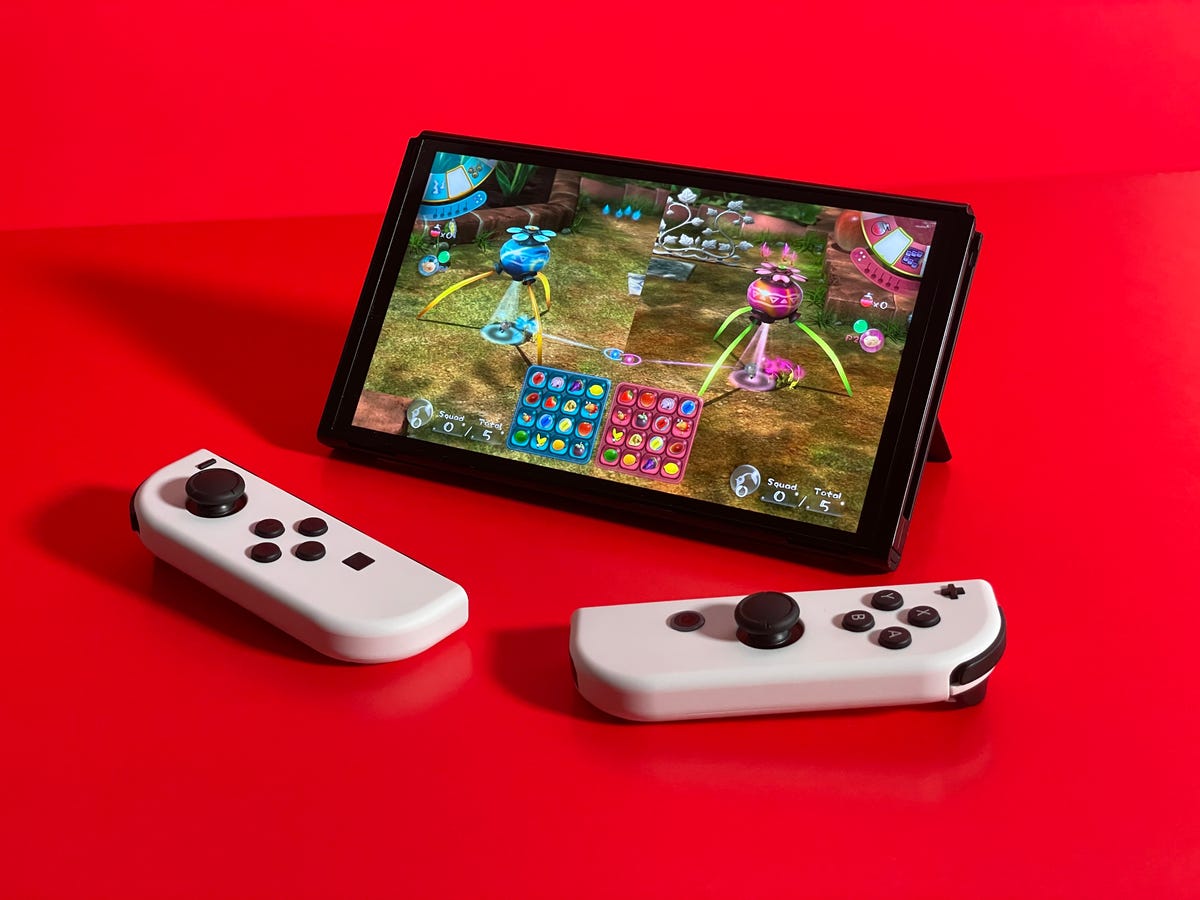Handheld gaming has returned in a new and weird way. Enthusiast indie handhelds like the Panic Playdate and Analogue Pocket have tapped into the spirit of the old Game Boy. Streaming-capable handhelds like the Razer Edge, Logitech G Cloud and Sony’s upcoming Project Q are playing with second-screen ideas that go back to the Nintendo Wii U, but for a streaming-game age. Then there are shrunken-down gaming PCs for your hands, like the Steam Deck, Valve’s PC gaming handheld. Regardless of the device, though, they all show off how much power can fit in your hands in 2023.
I’ve been living with a Steam Deck for the last few weeks. It’s been available for more than a year and has won gamers over with its surprisingly capable design and the seemingly magical ways it handles PC-level games on the go. As a Nintendo Switch user from Day 1, I’ve been surprised. It has a few flaws — it’s big, and it’s complicated — but in many ways, it’s everything I want a Nintendo Switch 2 to be.
Read more: Steam Deck Evolves: Valve’s Portable Gaming PC, One Year Later
Six years have gone by fast
The Nintendo Switch arrived on the scene on March 3, 2017, and over six years later, not all that much has changed. Since its initial release, Nintendo has improved the Switch’s battery life, released a smaller Lite model and added an iteration with a larger OLED screen. The idea of the Switch, however, has remained the same. All of the models mainly use the same type of CPU and GPU, too. As I discussed with former Nintendo president Reggie Fils-Aimé, the Switch seems due for some sort of upgrade… but according to Nintendo, the Switch’s life cycle could be as long as 10 years.
As always, it’s hard to know whether Nintendo is going to create a truly revamped “Switch Pro” model that’s been expected off and on for years. And for however successful the Switch has been — it’s one of Nintendo’s top products of all time — it’s over 6 years old. It’s overdue for it to get more advanced to stay competitive.
To Nintendo’s credit, it knows how to maximize its hardware and graphics: 2023’s Zelda: Tears of the Kingdom and Pikmin 4 show how well the Switch can still play games. But it’s fallen behind in other areas, places where Nintendo could leap ahead again with a true Switch successor. Will it happen in the next year? Perhaps. Nintendo has stated there won’t be a new platform in the next financial year, but expectations from the industry, including competitors like Microsoft, say a new Switch is around the corner. Nintendo’s working on something, and has already confirmed that a new platform will be backward-compatible with the current Switch.
Read more: Happy Birthday, Nintendo Switch: Those Years Flew By
The time has come
Nintendo has historically released new consoles roughly every five to six years, and the Switch came out in 2017. The Wii U, in 2012. The Wii, 2006. The GameCube, 2001. The N64, 1996.
Does that mean Nintendo could dream up a whole new successor to the Switch, something that could be completely different and unexpected? As different from the Switch as the Wii was from the GameCube? Who knows? But we may see a true upgraded version of the Switch (a Switch 2, a Switch Pro or whatever it’s called) sooner rather than later if leaks and rumors are to be believed. It should be something that’s a true boost compared with the more modestly tweaked Switch OLED from back in 2021.
Nintendo’s comments last year suggesting the Switch is midway through its life cycle suggest more iterative upgrades to come, but right now, a more powerful chipset seems like the logical next move, whenever that might be. Years ago, Bloomberg reported that game developers already had the hardware to work on 4K Switch games, and in 2022 a reported Nvidia leak took social media by storm as Twitter users pointed out possible hints to new Switch models in the source code.
Nintendo hasn’t indicated any new hardware is coming, although it has acknowledged there will be a new platform. Nintendo keeps its hardware news under tight wraps, and surprise announcements (like 2021’s sudden OLED Switch drop) are the norm. Right now, it’s fine to buy a Switch that’s already out there. The Switch remains a great, but aging, handheld system with a steady supply of games, both Nintendo-made and indie.
But here’s what Nintendo could — and should — do next.
Read more: Nintendo Switch OLED vs. the Others: We Played With Them All

Add a new processor to keep up with the competition
4K graphics aren’t the only thing Nintendo could adopt: think graphics that could let the Switch finally compete with newer Xbox and PlayStation consoles and games. The Switch has struggled with games requiring high-end graphics performance that can run on the PlayStation 5 and Xbox Series X. It’s led to a trend of cloud-streaming games on the Switch that need to be internet-connected to work. While game streaming is only going to grow, the next Switch needs to handle these games better on the console. Could it even, somehow, add graphics processing in the dock itself? That would ramp up the cost, but it’s an interesting thought. Some computers can do that now, adding a Thunderbolt-connected graphics unit while docked. But on a console, it could become a messy idea (memories of the Sega Genesis 32X start to pop up).
One question with an upgraded Switch processor would be how Nintendo balances games for the “new” system versus the older one. The Nintendo 3DS got a chip upgrade midcycle with the New Nintendo 3DS, but its advantages were subtle. Sony’s PlayStation 4 Pro improved graphics for many PS4 games, acting as a stepping stone between the PS4 and PS5, but it wasn’t an essential pickup for most gamers. Microsoft did something similar with the Xbox One X before the Series X and S, so there’s precedent.
Valve’s Steam Deck is the new mark for where handheld game systems can evolve. Even though the Steam Deck is huge by comparison, it’s capable of running full PC games. It can stream games, too. Nintendo’s Switch needs to catch up, to some degree, with where the rest of the mobile and handheld gaming landscape is heading.

Fix those Joy-Cons
Those little versatile Joy-Con controllers that slide onto the Switch are a brilliant idea… but they’ve aged awkwardly. Many Joy-Cons end up with drift problems or worn-out buttons over time. (The Switch OLED’s Joy-Cons are meant to have subtly addressed the drift problem, but are otherwise the same as ever.)
In 2023, I can’t stand how small they are. Also, their trigger buttons, which aren’t analog, feel dated. The Steam Deck’s smooth analog triggers are the basic expectation of most gamers now, and Nintendo should join the rest of the pack. The Joy-Cons’ haptic vibrations, while ahead of their time in 2017, now seem behind what the Xbox and PlayStation (and phones) can do, too. And the Valve Steam Deck adds other inputs: haptic-enabled touchpads that I love having as an additional option, and rear paddle triggers.
I’d love a whole new type of Joy-Con, one that could still work with older Switch games. I’d even say that an improved Joy-Con might be my most hoped-for feature on a next-gen Switch. Whether Nintendo adds new types of buttons or controls, I’d like them to be sturdier and improved, and fix those triggers.

An even better Switch display
The OLED Switch has an excellent 7-inch OLED screen that’s far more vibrant than previous Switch models. I love it, but it’s not enough. That display’s 720p resolution is fine for Nintendo’s current games, but a 1080p OLED makes more sense for a next-gen Switch. The Switch can already output 1080p on a TV with the dock. Maybe that screen size could be improved even more, too, creeping to 8 inches. The OLED Switch shrank bezel sizes considerably compared with the older Switch, but there’s still wiggle room.
The current handheld gaming landscape isn’t faring much better. The Steam Deck’s display resolution is 720p, too. Adding a higher-res screen could end up taxing the Switch 2’s processor and battery life.
Most current Nintendo games don’t lean on high-res graphics that much, but if Nintendo boosts that processor to allow for more competitive next-gen games to work on Switch hardware, there would be reasons to improve that display. Then again, Nintendo hasn’t generally been about bleeding-edge resolution specs in the past.
Will Nintendo get weird?
The wild card is Nintendo itself. Nintendo doesn’t tend to walk in straight lines when it comes to gaming hardware: Its history of consoles is full of wild zigs and zags. The Nintendo DS’s split-screen, stylus-enabled design, for example, turned the Game Boy design on its head. The N64 had its wild three-prong controller. The Wii’s transformative motion controllers were followed up by the Wii U’s included touchscreen tablet controller. The 3DS added glasses-free 3D. Will Nintendo have a Switch 2 curveball?
One theory has Nintendo somehow adding a DS-like second screen to the Switch 2. This is total speculation, but I’ve come to love that idea. In an age of foldable phones, a second screen no longer seems that weird. It would also allow Nintendo to revive its entire DS and 3DS game library, which has vanished. And there’s a practical point: Folding down the top screen could protect the bottom one.
Another report suggested some dial-like controls on the top. I don’t think anything is impossible, knowing Nintendo. I’d love a little bit of weirdness on the new Switch… in fact, I’m hoping for it. It’s also how a Switch 2 could differentiate itself from the competition. After all, even the little Panic Playdate had an analog crank.
I also wonder about peripherals. The Nintendo Labo cardboard sets toyed with new ways to play with the Switch, and so did Ring Fit Adventure. Nintendo hasn’t had any new Switch accessories in a long time, and it’s a territory the company dives into (I remember the Wii Fit balance board well).
The Switch is fine… for now
For now, be happy with whatever Switch you have, and even buying a new one (especially if it’s on sale) isn’t a terrible idea. There are plenty of great games. But I’m ready to keep an eye out for something new on the horizon. It’s been two years since the last Switch, and odds are something is on its way in the next year.
